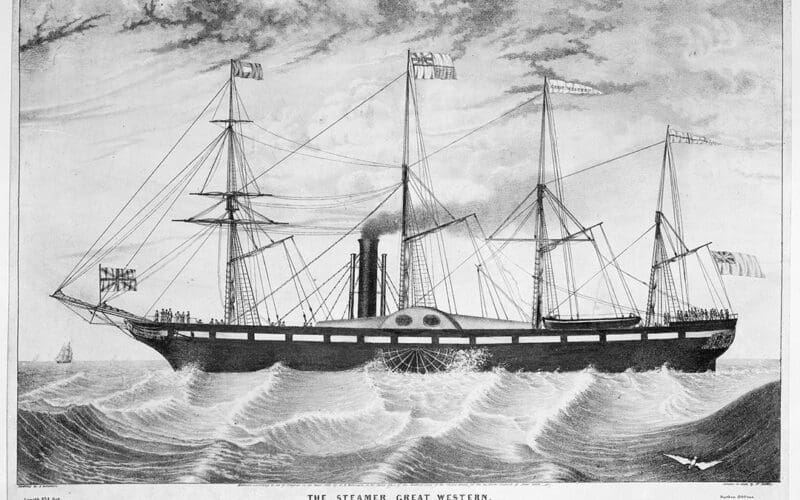
It was not a propitious beginning. In July 1837 in Bristol, England, as 50,000 people gathered for the launching of SS Great Western, the largest ship ever built, an unknown shipyard worker was killed when a large timber fell on him. Despite that tragedy, Great Western went on to an illustrious and profitable career.
The ship increased the fame of its designer, Isambard Kingdom Brunel, an engineer already of high renown, who had designed the Great Western Railway operation from London to Bristol. At the opening of the railway Brunel was said to have made the comment that there was no reason to stop at Bristol. Why not continue on to New York City? So outsized was his reputation that a group of investors immediately formed the Great Western Steamship Co. Brunel even agreed to design the new ship for free.
There was already a sailing ship packet service between Liverpool and New York. Companies like the Black Ball and Swallowtail Lines carried cargo and passengers on a regular schedule. Sail-assisted steam ships had proven their worth on coastal passages but it was thought that such vessels wouldn’t be suitable on transatlantic passages as they wouldn’t be able to carry enough coal to make steam, nor could they be be built big enough to make a profit. Brunel believed he could design a ship that could use a steam engine paddlewheel that could go transatlantic. For added strength Brunel used iron strapping on the wooden oak hull. Great Western was 252 feet LOA, 57 foot 9 inch at the beam and had a draft of 23 feet. She was 1,230 gross tons, with a capacity of 128 passengers, a crew of 60, carrying 200 tons of cargo. She held up to 800 tons of coal, sufficient for 25 days at full speed. Cruising speed was 8.5 knots. Great Western was outfitted with two side-lever steam engines that produced 750 horsepower.
On Great Western’s first passage from Bristol to New York, she became a record holder, making the passage at an average of 8.66 knots. From 1838 to 1840, Great Western averaged a 16-day westward passage and a 13-day homeward passage. She completed 45 crossings in eight years.
Let’s join Great Western on a cold late autumn passage on December 18th, bound to New York. We will use the 2023 Nautical Almanac. The height of eye is 20 feet and we are doing a lower limb sun meridian passage observation. The time of meridian passage is 11:56 LMT. For our DR position we are at N 45° 20’ by W 38° 35’. The Hs of our sight is 21° 7.5’.
A. Find the time of LAN in GMT.
B. Find the Ho of the observation.
C. Find the latitude.
Click HERE for the answer.

